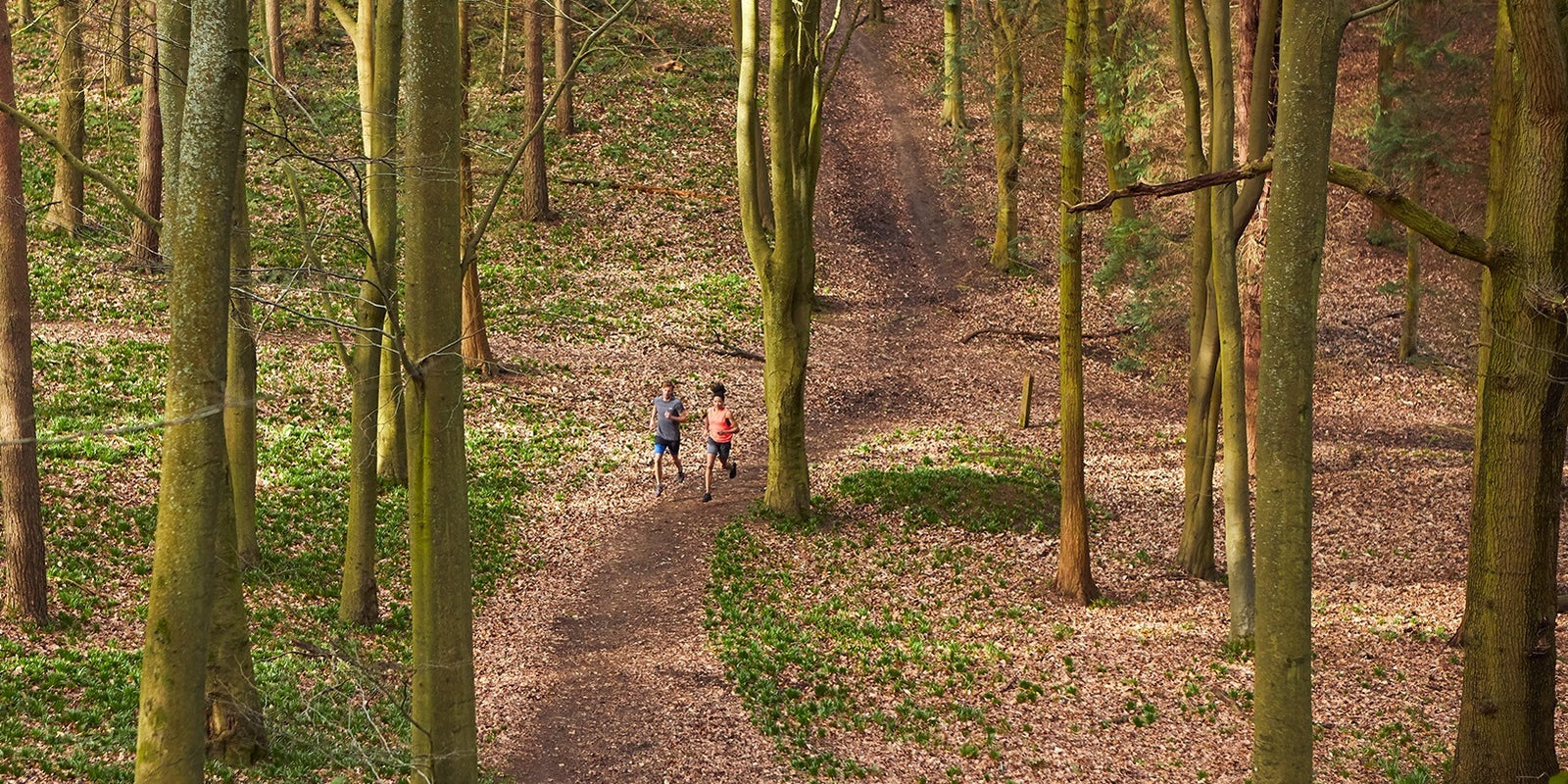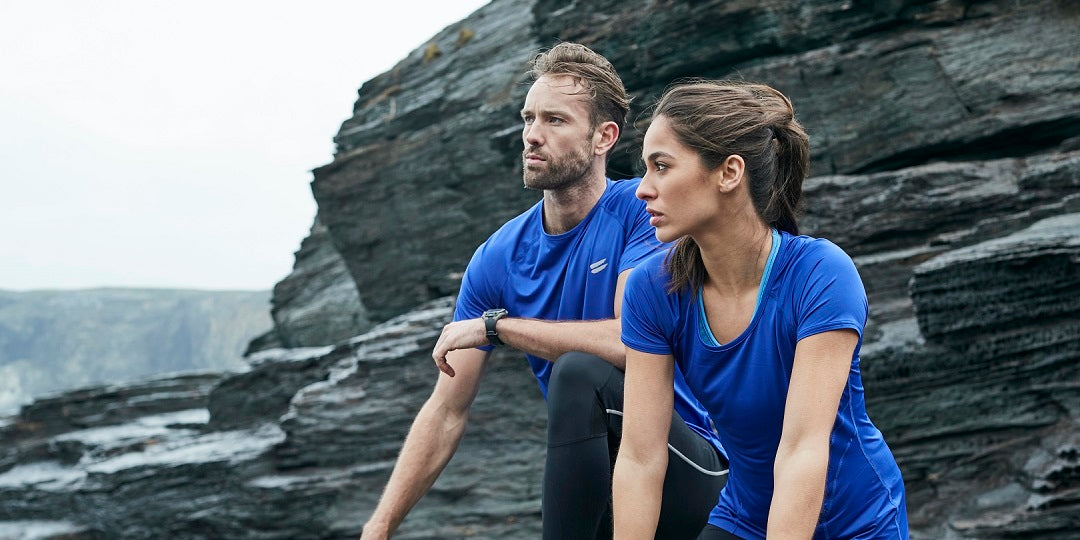If you’re bored of running along the same tarmac pavements day in, day out as you stare at the same grey faced buildings whilst listening to the same car engines as they thunder by, it’s time to step off the tarmac and onto the trail.
Trail running provides some much needed variation. Even if you pound the same trail over and over again, changing weather conditions provide variety by changing the surface and condition of the trail. Different trails also vary in intensity. You can scramble up and down hills, leap across brooks and streams, run on dirt tracks and muddy pathways or you can simply run through your local park.
Aside from variation, other benefits of trail running include burning more calories and sustaining fewer injuries than road running. Dodging obstacles and changing elevations makes for a tougher workout. And trail surfaces are often softer than tarmac, reducing the impact of your feet hitting the ground and resulting in fewer injuries.
How to get started
So, if you’re ready to step off the tarmac and embrace a new challenge, first things first you need to find a trail! Trail running encompasses anything that’s off road - dirt trails, grass or sand for example. If you’re unsure of your ability begin by running through a local park to get used to the difference between pavement and softer, uneven surfaces. You should also consider joining a trail running group. They can provide local knowledge of trails suitable for your level of experience.
Trail running tips

Form
Keep your eyes on the trail! Keep your gaze four to five feet ahead to spot any upcoming obstacles. On more technical trails you may wish to carry your elbows a little wider to provide better balance when navigating obstacles and uneven surfaces. Your stride will also change to accommodate dodging obstacles by lifting your feet higher or hopping around them. The rough ground and the twists and turns will also build stronger joints and muscles thus leading to fewer injuries.
When running uphill lean slightly forward into the hill making sure not to bend at the waist. Take smaller strides and more frequent steps whilst pumping your arms to propel you upwards. There’s absolutely no shame in walking up steep hills, it’s all part of trail running.
When running downhill make sure you’re not leaning back and landing heavily on your heels. On gentle gradients open up your stride and let gravity assist you. For really steep gradients run similarly to how you would down a flight of stairs, keep your torso upright and let your legs do the work.
Be humble
Trail running will be exhausting at first. Slow down and work out a new rhythm. It won’t take long for you to get a feel for it and start picking up the pace. To begin with calculate the duration of your run by judging the effort you’re exerting. You won’t be able to achieve the same distance or time you normally would when road running so it’s unwise to begin by using these indicators when taking your first venture into trail running.






Leave a comment (all fields required)